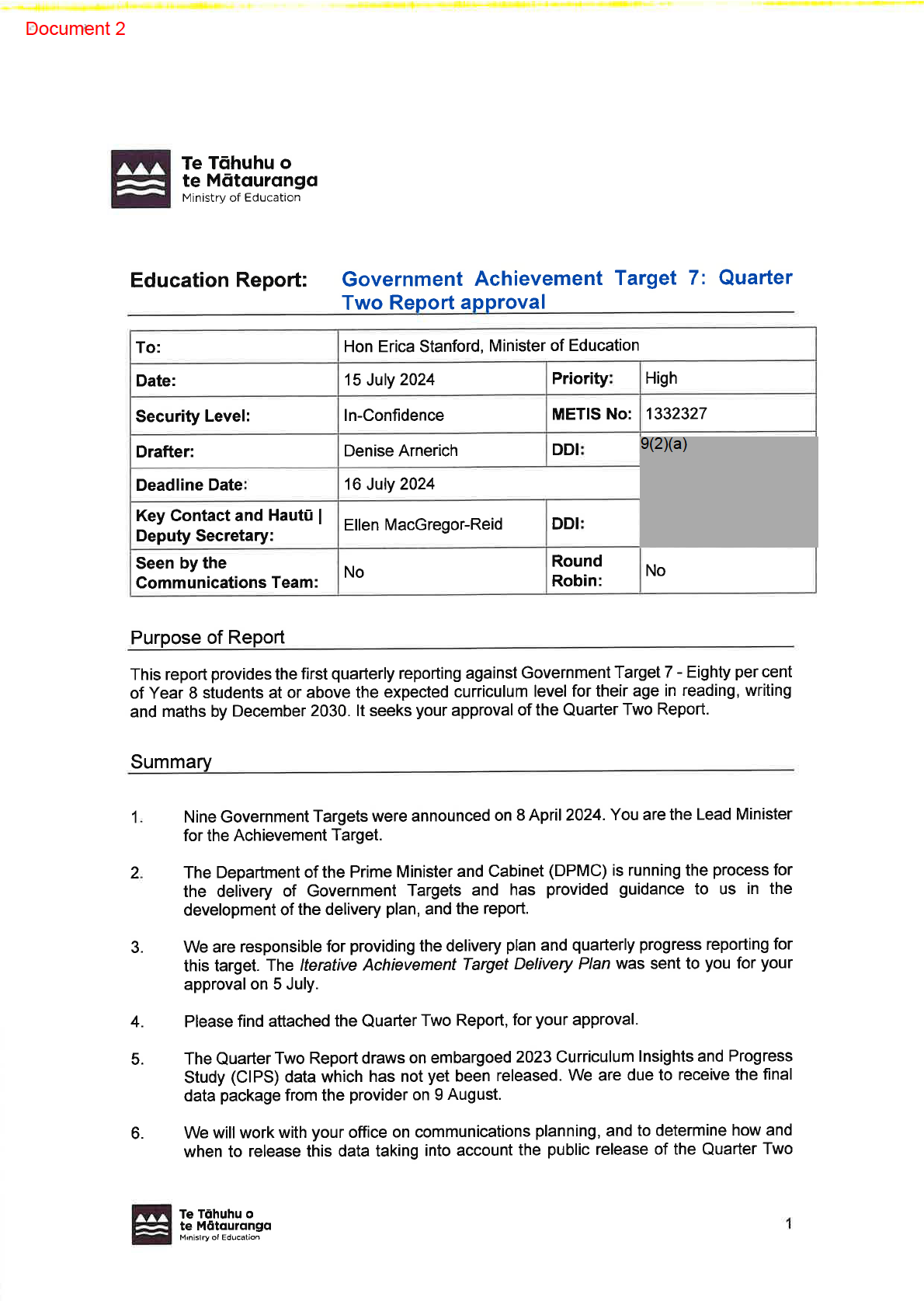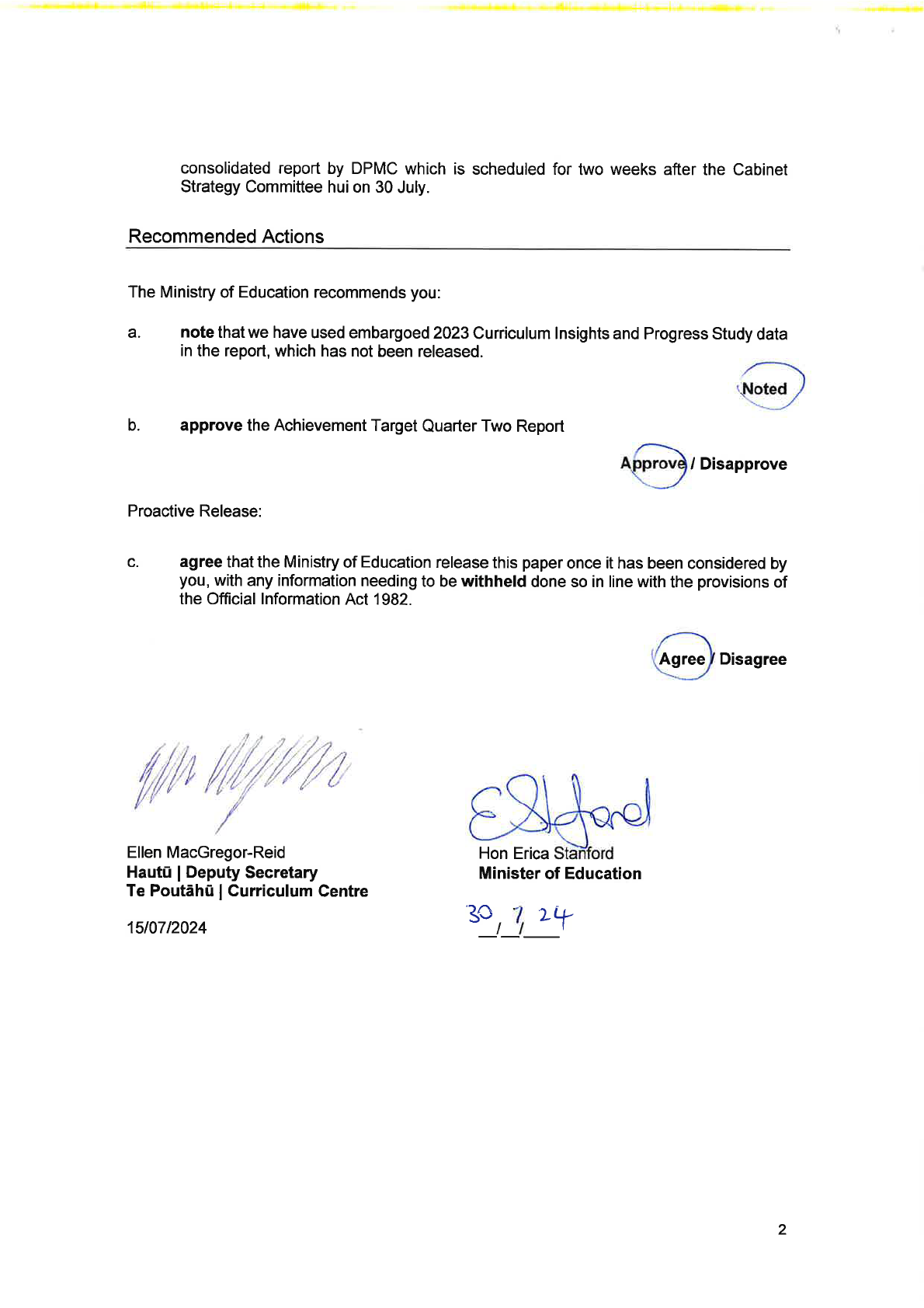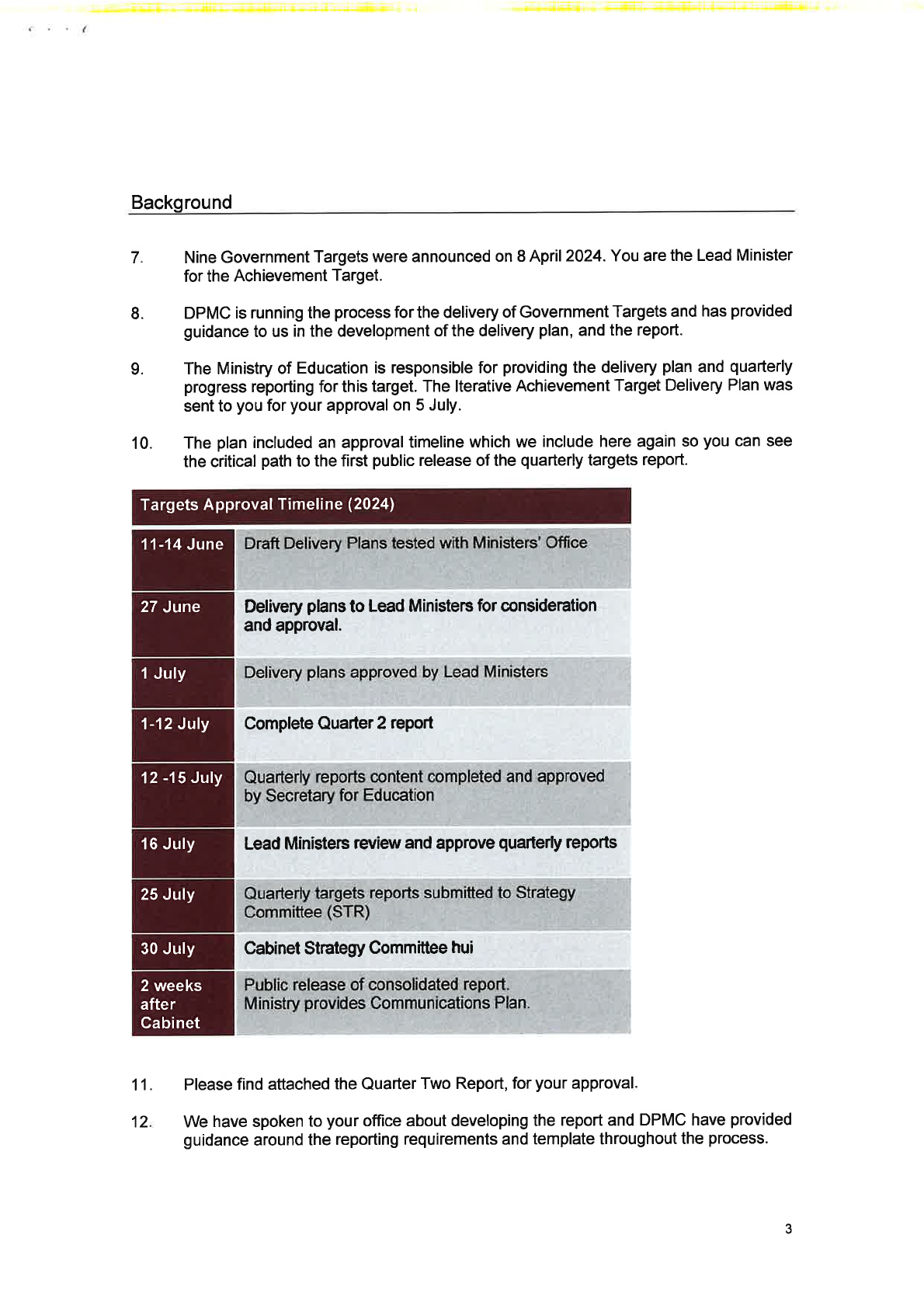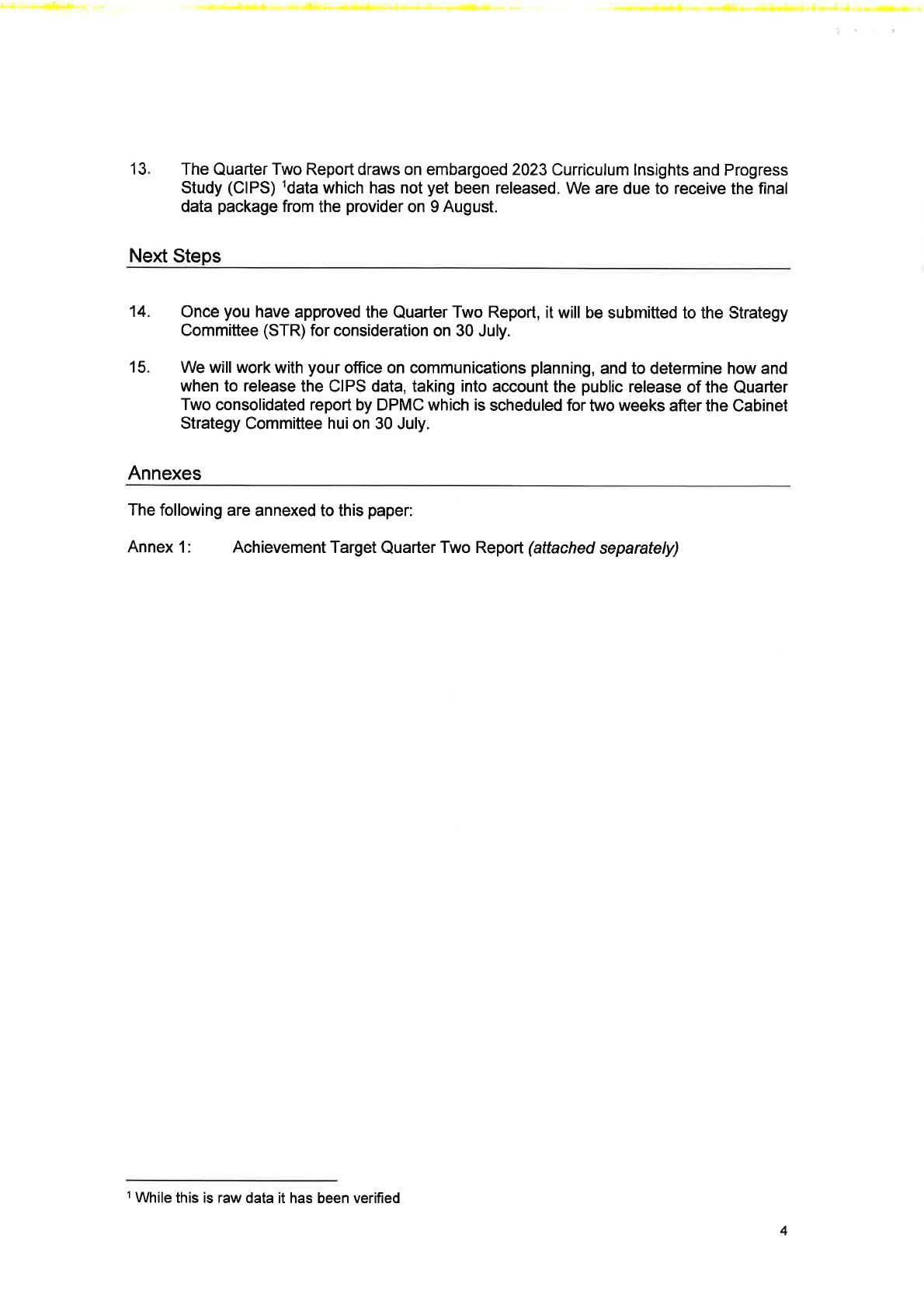
1982
Act
Information
Official
the
under
Released

1982
Act
Information
Official
the
under
Released

1982
Act
Information
Official
the
under
Released

1982
Act
Information
Official
the
under
Released
Document 3
Rapid Response – 1333409 - 1 Aug – 9:45AM
Maths results – Te Poutāhū
Why are the results so much worse than the previous NMSSA results?
• There are several contributing factors.
• These results really reflect the teaching and learning that has taken place under the
2007 NZ Curriculum. The draft 2023 curriculum had only been in place for two terms
before the assessment was conducted.
• The 2007 NZ Curriculum which NMSSA assessed is not as clear as the refreshed 1982
one about what students needed to know and be able to do after each year in school.
This has probably contributed to inconsistent teaching and priorities over time. If
students don’t master these foundational skil s in their early years, it is difficult to
Act
progress further.
• Analysis of the underlying scale of 2023 and 2022 results confirms that student
maths performance was no different, but rather the expectation of performance
needed to meet curriculum has changed.
• The data shows that the draft 2023 curriculum is more rigorous and precise about
what needs to be taught and what students need to know and be able to do. It also
shows us that fewer students are able to achieve these expectations.
• The new curriculum created a higher expectation of student performance to meet the
Information
curriculum in maths. Therefore, though performance in 2023 was no different to
2022, the proportion of students meeting the curriculum has dropped.
• We have had a mixture of teaching practices being used for the past 20 years, and
some teachers have reported a lack of confidence teaching maths.
Official
Accelerating the new maths curriculum / structured maths rollout – Te Poutāhū
What does this mean for Kura Kaupapa / Maori medium schools / curriculum?
the
Achievement for ākonga learning in te reo Māori settings is not captured in NMSSA or CiPs.
9(2)(f)(iv)
Out of scope
under
Released
Out of scope
1982
Act
Information
Official
the
under
Released
Document 4
Minister’s reactive Q & As (Sunday 4 August)
METIS - 1333296
Why has the use of the updated Maths learning area been brought forward? To improve student achievement in maths and pāngarau.
The Curriculum insights and Progress Study (CIPS) has shown we have a more serious issue in maths
and pāngarau than expected, which means we don’t have time to waste.
We are bringing forward the use of the refreshed mathematics and statistics learning area and the
pāngarau wāhanga ako so that teachers and kaiako will use them to deliver maths learning in all
primary schools and kura across the country from Term 1 2025.
1982
How are teachers and kaiako being supported to make these changes? Clear requirements and the provision of professional learning and support will help ensure teachers
Act
and kaiako can implement the new maths and pāngarau materials and deliver knowledge rich,
sequenced maths learning for all students.
We are also increasing accountability across the education system to help redirect resources and
support where they are needed.
We don’t have enough Maths teachers as it is, how will making ITE entry harder help? A trained and qualified workforce is a key part of reaching our targets. Requiring higher maths entry
requirements is one way we can ensure all students get taught the basics, brilliantly.
Information
Why are the results this bad? We have had a mixture of teaching practices being used for the past 20 years, and some teachers
have reported a lack of confidence teaching maths.
The 2007 NZ Curriculum is not as clear as the refreshed one about what students needed to know
and be able to do after each year in school. This has probably contributed to inconsistent teaching
and priorities over time. Unfortunately, if students don’t master these foundational skills in their
Official
early years, it is difficult to progress further.
The data shows that the refreshed curriculum is more rigorous and precise about what needs to be
taught and what students need to know and be able to do. Unfortunately, it also shows us that
the
fewer students are able to achieve these expectations.
Do these results mean the new curriculum isn’t working? No. The assessment was conducted after just two terms of teaching the refreshed Mathematics and
Statistics and English learning areas, therefore the results really reflect teaching and learning prior to
under
2023 using the 2007 NZ Curriculum.
What are you doing about this? We have introduced a four-point action plan to tackle maths achievement.
This includes:
Curriculum: requiring the use of the updated learning area and wāhanaga ako materials for maths
and pāngarau from the start of 2025 and clarifying the expectation that an hour-a-day of maths and
pāngarau is a dedicated hour each and every day.
Released
Assessment and acceleration: requiring
twice yearly assessments for maths and pāngarau in primary
schools and kura, commencing from 2025, so it is clear how children are progressing and allowing
early response where additional support is needed.
Enhancing workforce: progressing
higher Initial Teacher Education (ITE) entry requirements for
maths and pāngarau.
Meeting requirements: directing the Education Review Office (ERO) to update its reporting to
parents with clear and useful information to ensure schools are using the curriculum as intended,
carrying out effective assessments and fast-tracking progress.
For maths, what did the students get tested on and what couldn’t students do? The study covered a range of things, like how well Year 3 students did with basic addition and
subtraction. Most did well with this, but they didn’t do as well as expected with their multiplication,
or with adding and subtracting larger two- and three-digit numbers.
1982
Year 6 students didn’t do as well as expected when it came to things like adding and subtracting
fractions and decimals and multiplying two-digit numbers.
Year 8 students didn’t do as well as expected when it came to things like ordering fractions,
Act
subtracting decimal numbers, and calculating the volume of a shape.
Is this a robust study? Yes. This study is the successor of the National Monitoring Study of Student Achievement. It is run by
the University of Otago and New Zealand Council for Educational Research.
The full report will be released on 9 August.
Information
Official
the
under
Released



